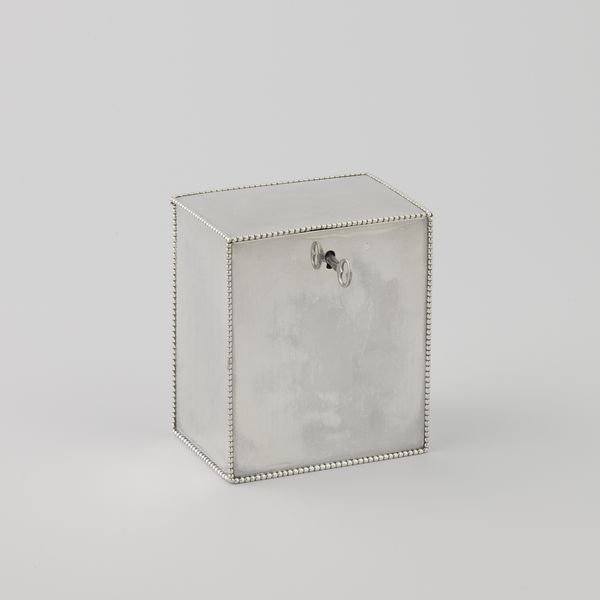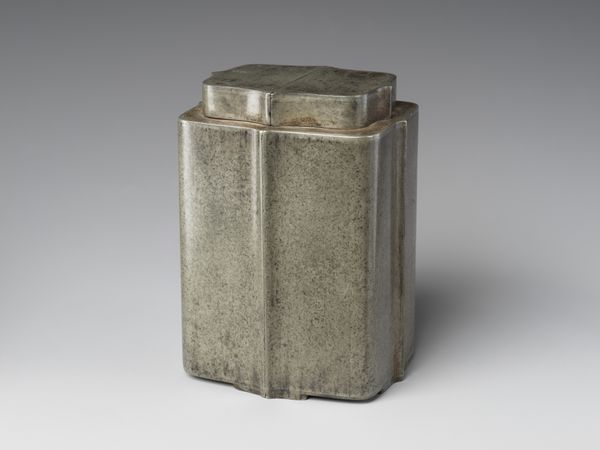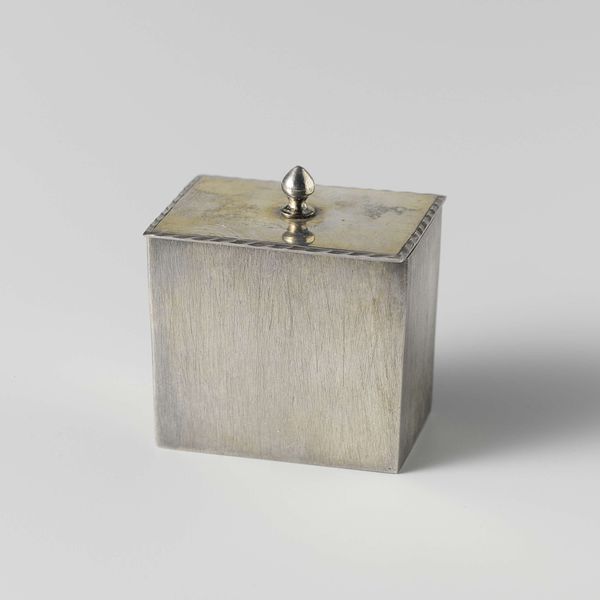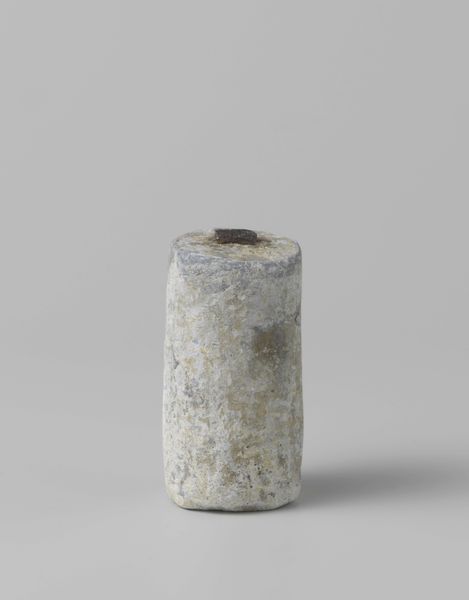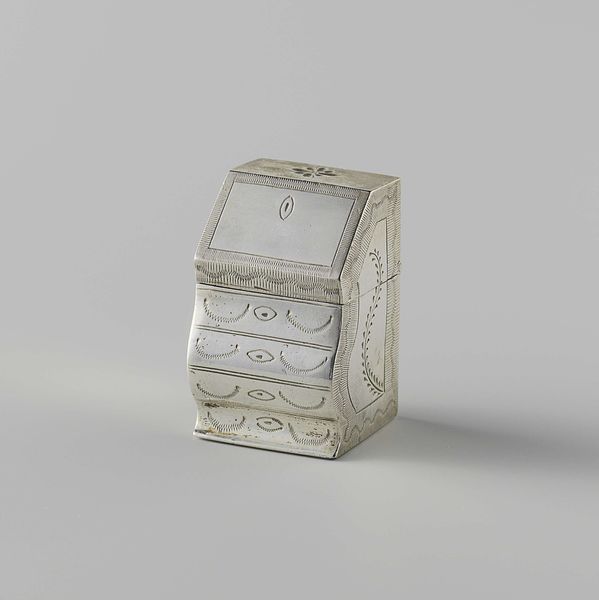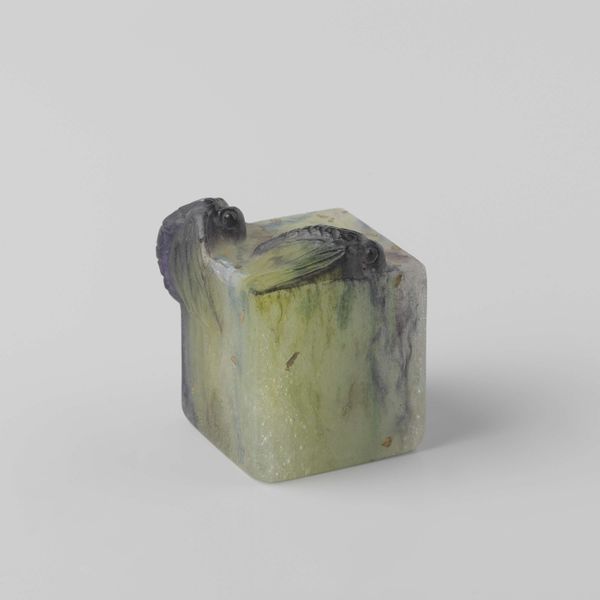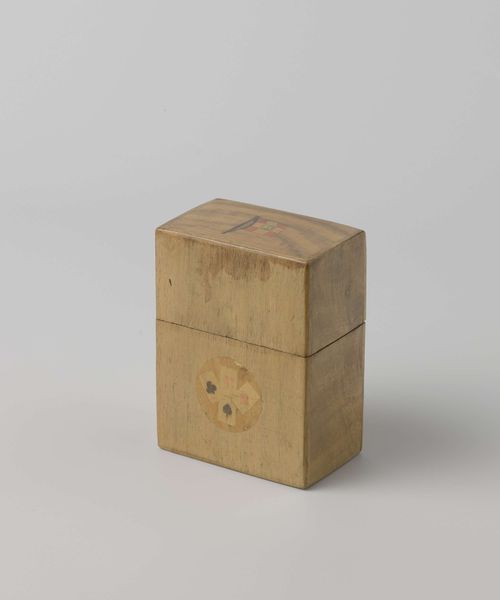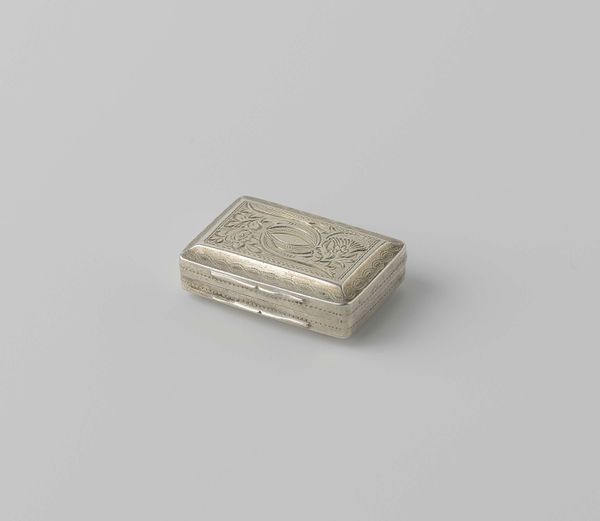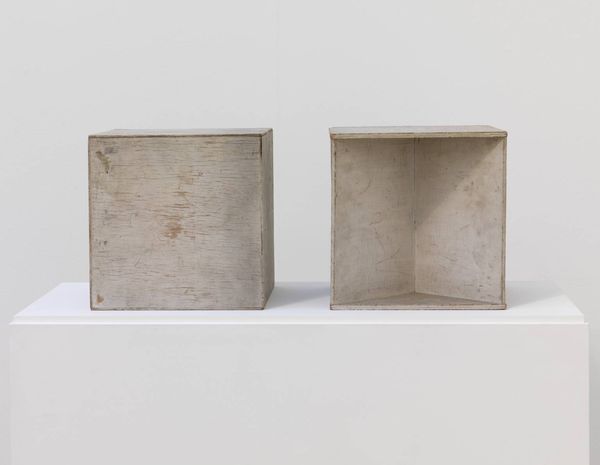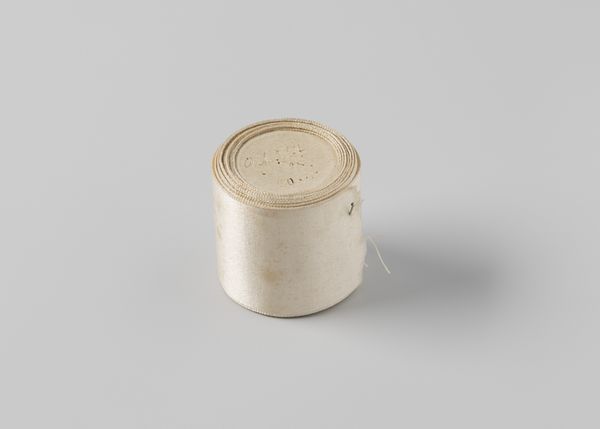
silver, metal
#
product shot
#
3d model
#
silver
#
3d printed part
#
metal
#
virtual 3d design
#
product design photgrpaphy
#
3d shape
#
metallic object render
#
product mock up
#
3d modeling
#
decorative-art
#
product render
Dimensions: height 3.0 cm, length 2.6 cm, width 1.6 cm, weight 19.0 gr
Copyright: Rijks Museum: Open Domain
Editor: So, this is a silver "Loddereindoos," a trinket box from 1825 by A. Keun. It’s crafted to look like a miniature book, which is pretty charming. The inscription makes me think of personal secrets and hidden histories. What stories do you think this object holds? Curator: Indeed. What appears at first glance as mere ornamentation actually opens up fascinating dialogues about societal norms of the 19th century. The inscription, possibly a monogram, situates this piece within a matrix of personal identity and perhaps even gender. Consider how women, often denied access to formal education and public life, used such objects to cultivate interior lives. What kind of clandestine communications or private rituals might this box have facilitated? Editor: That’s interesting, I hadn’t considered that. It's so small; did women of this era generally possess little artifacts like this? And what social meaning did they have, being locked away from broader society, as you say? Curator: Precisely! The very act of enclosing something suggests a desire for privacy, maybe even resistance. The preciousness of the silver underscores that what's contained within – whether tobacco, makeup, or mementos – was deemed valuable. These objects became extensions of the self, a tangible way of asserting presence within limitations imposed by gendered and class-based expectations. It's also interesting to note who was given such objects – perhaps gifts were made along familial or even gendered lines. Editor: So, it's not just a pretty little box; it's a tiny vessel carrying complex ideas about identity and social constraints. Curator: Exactly. The artifact’s diminutive form stands in stark contrast to the grand historical narratives we often study. It prompts us to rethink how everyday objects can reveal hidden struggles and subtle forms of agency. Editor: This makes me think about the power of objects and daily practices to communicate resistance. Thank you! Curator: And thank you for drawing us back to this artifact's silent power as a record and as a voice.
Comments
No comments
Be the first to comment and join the conversation on the ultimate creative platform.
